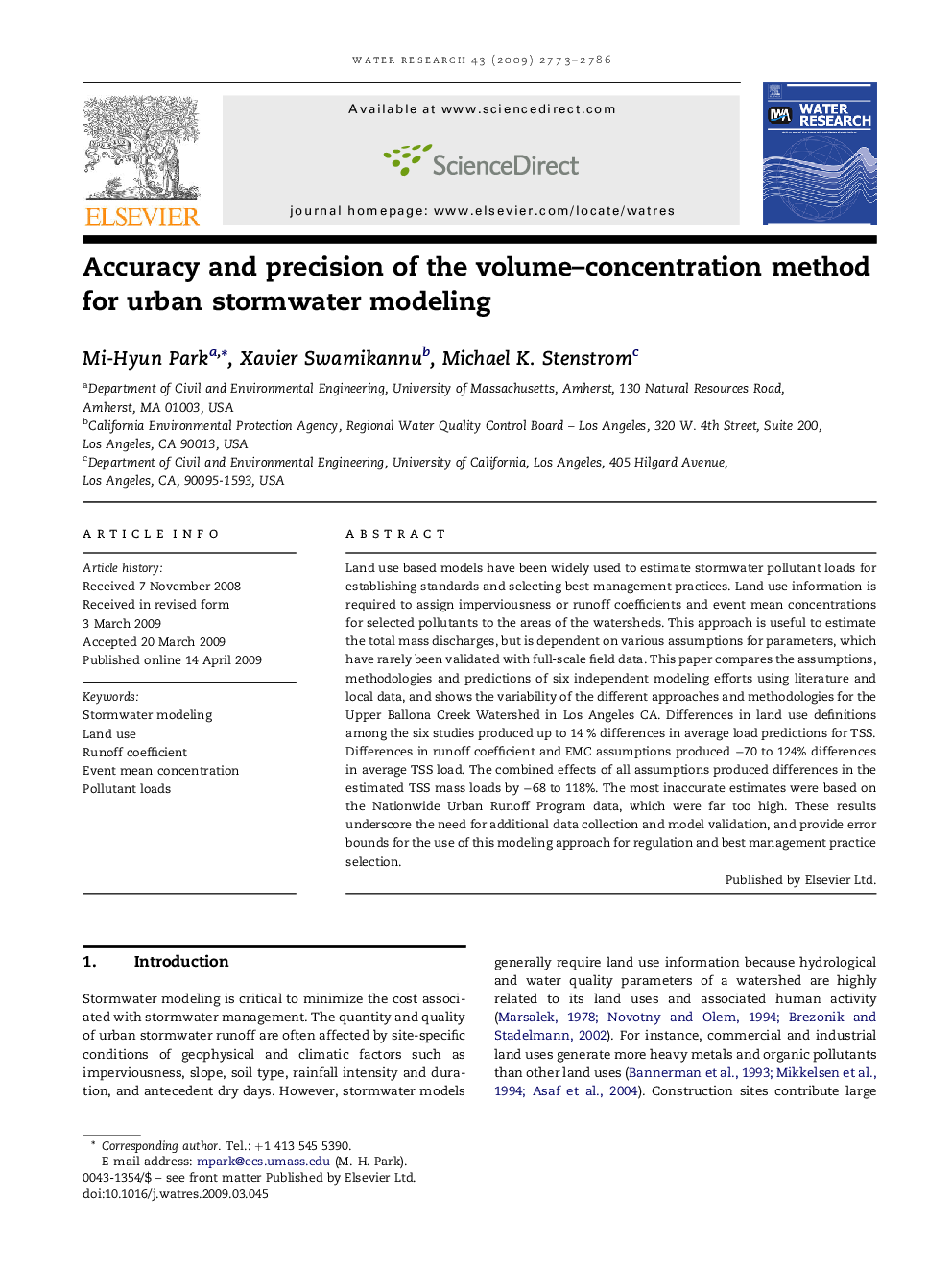| Article ID | Journal | Published Year | Pages | File Type |
|---|---|---|---|---|
| 4484647 | Water Research | 2009 | 14 Pages |
Land use based models have been widely used to estimate stormwater pollutant loads for establishing standards and selecting best management practices. Land use information is required to assign imperviousness or runoff coefficients and event mean concentrations for selected pollutants to the areas of the watersheds. This approach is useful to estimate the total mass discharges, but is dependent on various assumptions for parameters, which have rarely been validated with full-scale field data. This paper compares the assumptions, methodologies and predictions of six independent modeling efforts using literature and local data, and shows the variability of the different approaches and methodologies for the Upper Ballona Creek Watershed in Los Angeles CA. Differences in land use definitions among the six studies produced up to 14 % differences in average load predictions for TSS. Differences in runoff coefficient and EMC assumptions produced −70 to 124% differences in average TSS load. The combined effects of all assumptions produced differences in the estimated TSS mass loads by −68 to 118%. The most inaccurate estimates were based on the Nationwide Urban Runoff Program data, which were far too high. These results underscore the need for additional data collection and model validation, and provide error bounds for the use of this modeling approach for regulation and best management practice selection.
